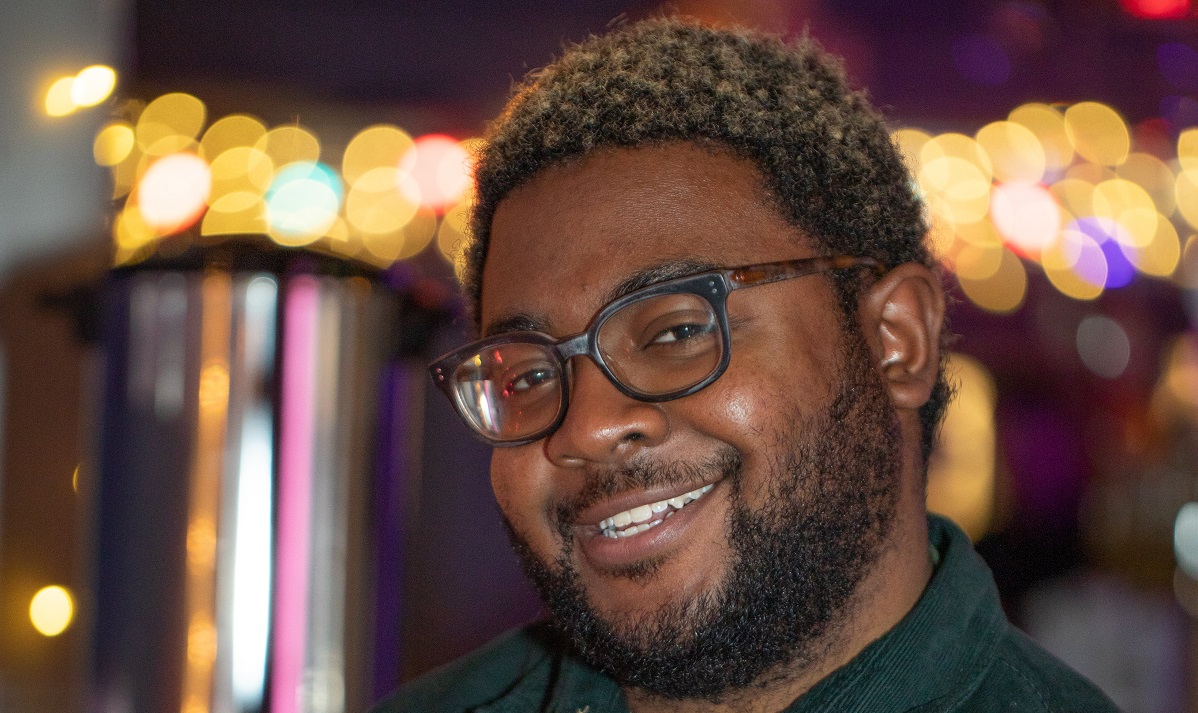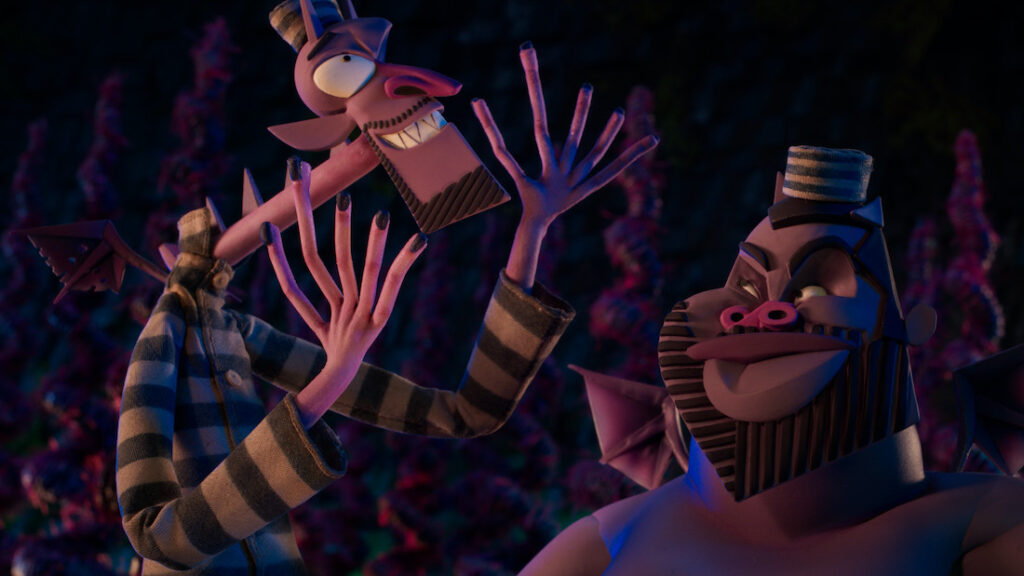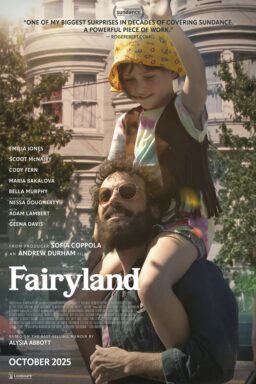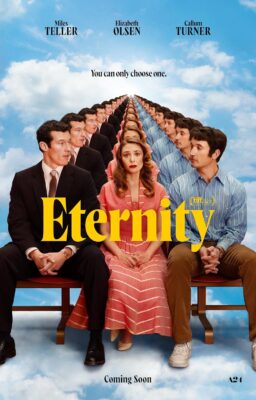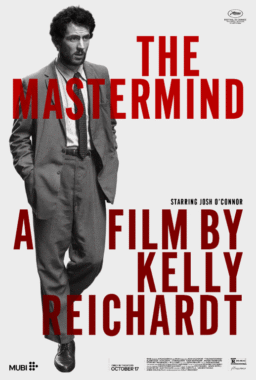In the field of stop-motion animation, no filmmaker has had a never-ending streak of hits like Henry Selick. Since his directorial debut with “Tim Burton’s The Nightmare Before Christmas”—which soon hits its 30th anniversary in the coming year—Selick’s skillful hand-crafting of spooky worlds that range between the supernatural and whimsical has enchanted movie lovers for decades. Selick’s “James and the Giant Peach” and “Coraline” have become staples of family entertainment in particular.
After a long hiatus since “Coraline” and the canceled “Shadow King” project for Disney, Selick is back. With “Wendell & Wild,” Selick delivers his first PG-13 fully stop-motion animated flick, his most ambitious and mature one yet. And this time around, Selick has teamed up with horror filmmaker Jordan Peele to write the film’s story.
The dark horror-comedy tells the story of 13-year-old Kat Elliot (Lyric Ross), a rebellious gothic orphan attending an all-girls Catholic school close to her burned-down hometown Rust Banks where she suffered the loss of her parents. Through supernatural circumstances, Kat finds herself becoming a hell maiden to two scheming demon brothers Wendell (Keegan Michael Key) and Wild (Jordan Peele), who want to open up an amusement park in the land of the living. Amid the demon entities, a rich and murderous conservative family crafts a sinister plot to open up a private prison institution where Rust Banks used to be.
RogerEbert.com spoke to Selick about the collaboration between him and Jordan Peele, the unique visual look of “Wendell & Wild,” and balancing between the supernatural and the social commentary.
What was the collaboration process between you and Jordan Peele like? Did you both schedule and work on the screenplay together?
It was great. It was more of a back-and-forth. I would take the first stab, and he would rewrite. He was mainly more big picture, big story, but also very much about the details of characters and the development. It kind of went like that. Occasionally, he’d take the first pass on a new thought. He was really good at dealing with studio notes. He would calm me down, and he might do an outline. He’d say, “If we shift this, this, and this, I think they’ll be happy, and we’ll still be happy.” It was like that. We would talk about things and then go back and forth. And it never ends. It’s not like, “Okay, that’s probably done.” Because when you put it all together, you realize something you thought was clear, is not clear. Or there’s a character who’s underdeveloped. And, Jordan is always good at lighting the characters and what else they need. Then maybe they were getting too much attention and they weren’t earning their keep, so we need to diminish them. In a lot of ways, he was almost like a story editor: shaping, stepping back with the big picture. And I was doing the day’s writing.

How many drafts did you do back and forth until it was completely finalized?
It’s hard to say. I mean, probably nine solid drafts. But you got to remember he had to go off and do a few movies. It was never that we just finished the draft and started the shoot. We’d draw the whole movie out in storyboards before we do the animation. So whenever you’re writing the page, the real shooting script is once you sketch it out, record the voices, and build that with what we call story reels. You build those story reels, you put in temp music, and you watch the film, it’s almost like watching a comic book in a way or like a series of comic book drawings. And then you really are fussing and moving things around in a way to get much closer to the final cut because of the shooting script. It’s a lot of drafts of writing but then many, many more drafts of the story reels. In some cases, pointing for one section in 20 versions, reworking others, and then maybe three more versions?
Were there any new methods to create stop-motion puppets for your characters as opposed to a lot of your other works?
I can’t quite say a resounding no. I felt like a lot of stop-motion was starting to get so slick and perfect that you couldn’t tell the difference between that and a CG animation. I think even “Coraline” had a bit of that where it may have been a little too perfect. So I want to go a bit backward and show off more of the artifice. We’ve got puppets who can talk because we replaced their faces with different expressions. We change their brows separately from their mouths, and there’s a seam. We’re gonna leave that in. And I bet you won’t even be thinking about it. So we actually tried to leave more of that to prove it’s a stop-motion film, there are more little mistakes. Things are always shot in 24 different poses a second, sometimes it’s 12, or 8. In that sense, we went kind of backward and showed off the process more.
I’m used to building pretty big sets and creating the backgrounds and it’s all in camera to where when you’re shooting and you’re finished, it’s kind of done. In this film we wanted to save time and space, we usually didn’t have a full background, especially if we were outside, and that was all created later. And so we’re shooting blue screen or green screen, and we’re compositing in these outside worlds that had to be built, you know, whether it’s digitally painted or a digital model. That was a new thing for me. We’re often just shooting puppets on a portion of a set, especially if it’s outdoors. If we’re inside, we usually build the whole set. It’s always like imagining, Well, what’s the world going to be like?
When we finally got down to putting that in and creating that, that turned into a huge challenge, because we couldn’t do that in-house. We could do a little of it in-house, but we had to go to outside vendors and get their help to complete all those worlds. And that’s a big juggling act because you’re working till you really don’t know. And you’re trying to get them in tune with a vision, but we had great people and we found our way.
What was the visual inspiration and aesthetic for the world?
A lot of that comes from the origin. I wanted the demons voiced by Keegan Michael Key and Jordan Peele to resemble them, to have caricatures. Those two guys weren’t convinced, because it could be stupid, you know, like big heads and little bodies. It’s kind of ridiculous. Then I said, “No no no, it’s gonna be cool, it’s gonna be artistic.” And I worked with this incredible Argentinian artist Pablo Lobato, to sort of design those caricatures. They’re very graphic and have strong shapes.
We did convince both Key and Peele, that yeah, this will be cool when we get that for several of the other characters. And it was from his design sense, which if you just look at his famous characters, looks very much like Picasso. Pablo was influenced by a lot of the same sorts of things: African wooden masks, Mayan and Aztec stone carvings, and things like that. That sort of rippled out, and influenced the look of the whole film.
We had several production designers, the first was Lou Romano. He’s a brilliant guy. He was the production designer on the first “Incredibles,” and so he was a good fit for Pablo’s style for the characters so that it all looked like one thing. We also have an amazing illustrator, this young guy, Kenny Leoncito who did beautiful illustrations. He did color illustrations for these key moments of the film so we can figure out what’s the look in the eye, and the lighting. But it all goes back to Pablo, the caricatures, and the rippling that looks out into the whole film.

This story has a bold ambition of bridging together these supernatural elements and the prison industrial complex. What was that sort of cohesion like? Was there any research into making sure that the commentary was developed enough for families, and people of all ages to understand its effect?
It was always a tricky thing. They say to be careful of message movies, but we wanted that to be part of it. It was always about who the real villains of the film are. It’s not going to be the monsters. It’s not gonna be the demons. It’s going to be people because they’re always the worst villains in real life. That kind of led to the idea of private prisons, because it’s an evil institution that’s illegal in a lot of states. The juvie justice system, I was aware of this because of my wife. For 10 years, she was an advocate for at-risk youth and special needs kids. I knew about that pipeline. So there’s a lot of research done, but mainly it was about just boiling it down to the essence.
Jordan was always good about that. That was another area he was great at. Just the tone of the film. And he felt that the film was not going to be about that. It’s sort of an undercurrent, it’s part of its structure. We didn’t want to create a big controversy, but we wanted to put it to enough to have some meaning in a way. When Siobhan finally realizes private prisons aren’t like country clubs and does some research, we would hope that the audience could maybe get that from the film. It’s a big balancing act. I’d like to think we put enough in there for people to learn something about, maybe be intrigued to find out more.
“Wendell & Wild” will be available in select theaters on October 21 and on Netflix on October 28.
